
Asturias is a unique region of the world. The appeal of this land is not only the opinion of Spaniards, but also that of the those outside the country. The latest international news media outlet to sing the praises of Asturias has been the British daily newspaper The Telegraph, which has ranked the Principality of Asturias as one of the best places on the planet.
And it is no wonder. Asturias is a place that has it all. Green landscapes seemingly from a fairy tale, villages full of charm, picturesque cities, and savoury cuisine. Dining in Asturias is an unparalleled experience along with such outdoor activities as trekking, rock climbing and kayaking.
Additionally, due to its cooler temperatures, Asturias is one of Spain’s ideal autonomous communities to visit during the summer months. Being a region located in the north of Spain, its climate is warm between the months of April and October, without reaching the higher temperatures of other parts of the country.
A recent study, conducted by the website Electomanía, confirmed this notion of “Asturias, beloved homeland”. According to its survey, Asturias is Spain’s most cherished region, followed by Galicia and the Basque Country.
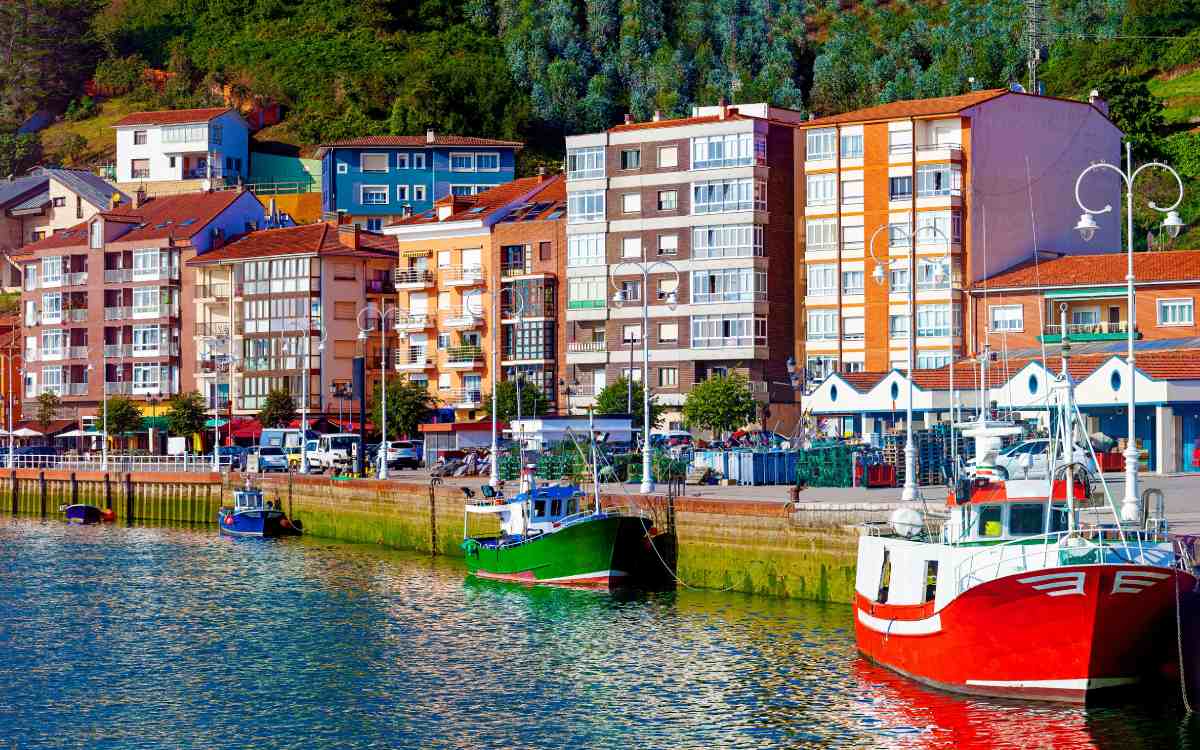
Ribadesella. | Shutterstock
The Telegraph states that Asturias has it all – except British tourists. Although this may be surprising at first glance, it is a fact that many Britons travel to Spain to bask in the sun and heat on its beaches. Taking into account that Britons are used to a cold and rainy climate, it is only natural that they would choose places like the Balearic Islands, Barcelona, Valencia and the Canary Islands for their holiday destinations. Although Asturias’ climate is not the same as the United Kingdom, it does, nonetheless, share some aspects such as cooler temperatures and rainy days.
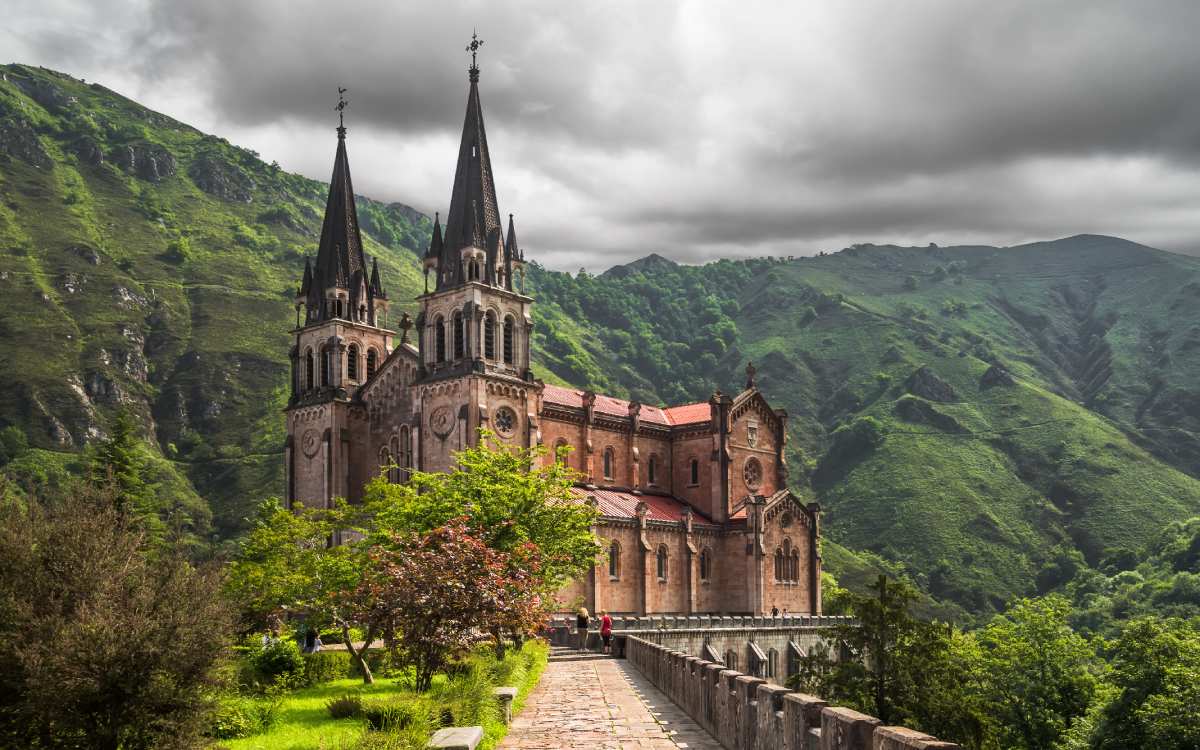
Basilica of Covadonga. | Shutterstock
Asturias has wonderful places. Ranging from Oviedo, its colourful capital, to the cultural city of Gijón, to the scenic Cangas de Onís, to the popular village of Ribadesella, from where the famous canoeing down the river Sella is organised. The British daily The Telegraph featured in its article some of its favourite spots. Here are the reasons for Asturias’ acclaim.
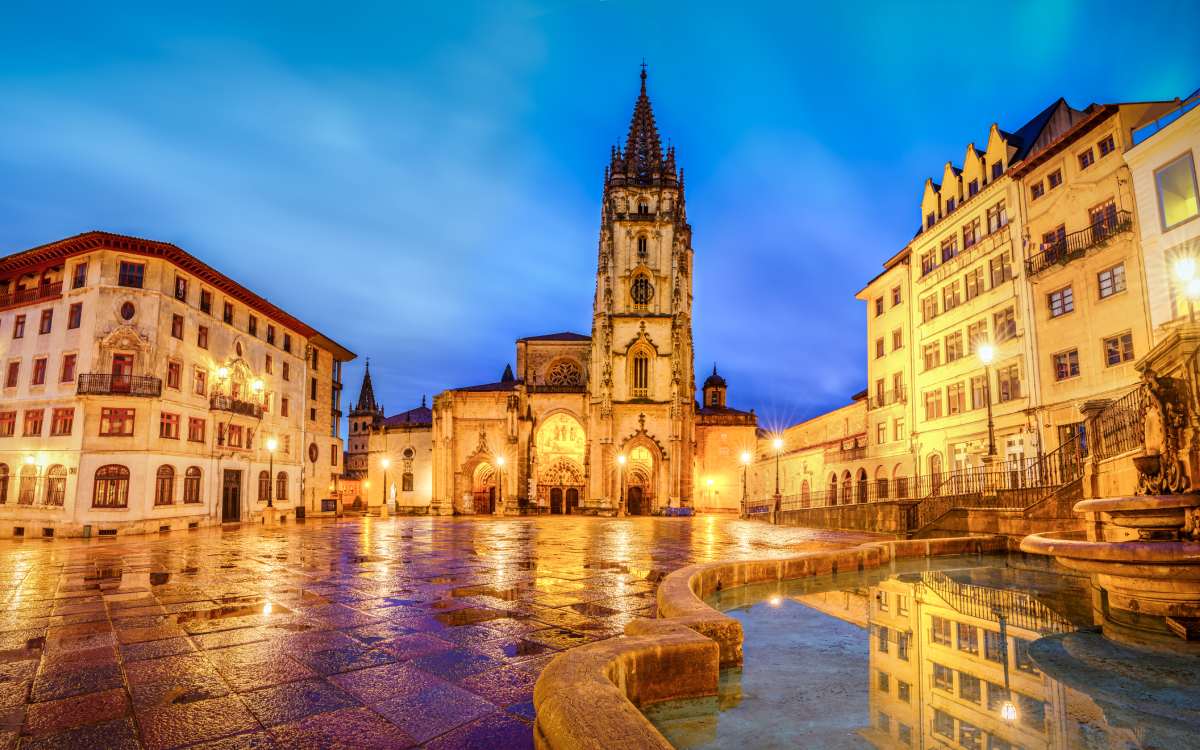
Oviedo’s cathedral. | Shutterstock
Oviedo, the region’s capital, is a pearl set upon a beautiful natural landscape. Visiting Oviedo is synonymous with marvelling at its quaint city centre streets. Its adorned cobblestone streets contrast with its fountains and stone buildings. The striking Plaza de la Catedral, the town hall, and the beautiful San Francisco Park are some of the must-see sites. In this lastly mentioned place, the current date is displayed with flowers on the grass.
One obligatory place to visit in this city is the traditional market of El Fontán. Located next to the Plaza del Ayuntamiento, this is a perfect spot to enjoy such traditional Asturian specialties as cheese, charcuterie and fish, all of which can be washed down with fresh cider. The Invierno Park and the streets of Uría and Gascona culminate this magical walking tour around the Asturian capital.
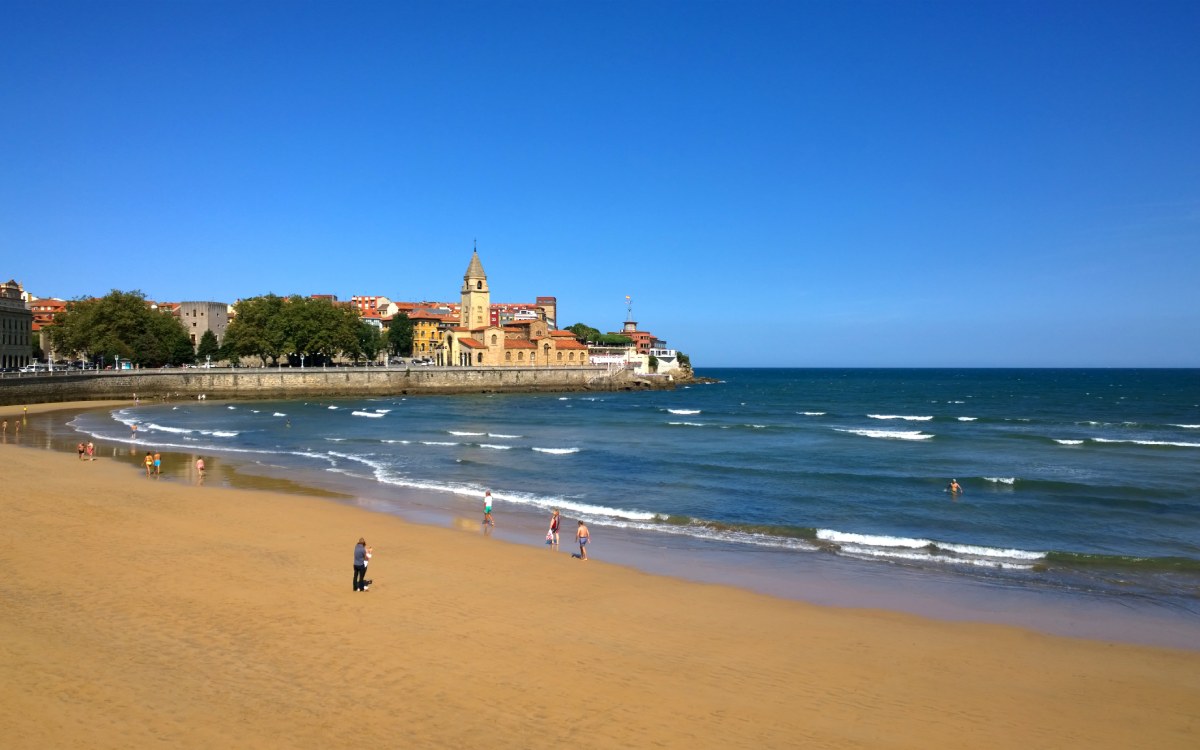
San Lorenzo beach in Gijón. | Shutterstock
The city of Gijón, known regionally as Asturias’ cultural capital, is surprising for a variety of reasons. The first is for the splendour of its old quarter and its colourful port. The second reason is for its tapas scene, considered one of the best in all of Asturias.
For beach lovers, a tour of the city at the stunning San Lorenzo beach, situated next to the port near the church of San Pedro, is a good starting point. Along this maritime promenade lies the sculpture Elogio del Horizonte on the Santa Catalina hill, one of Gijón’s most emblematic sites.
If an urban setting is preferred, a visit to Cimadevilla, an old fisherman’s quarter where the best seafood delicacies can be found, is recommended. Close to this area, specifically on the Cuesta del Cholo, the region’s best ciders are served and it is the ideal place to start off the night.
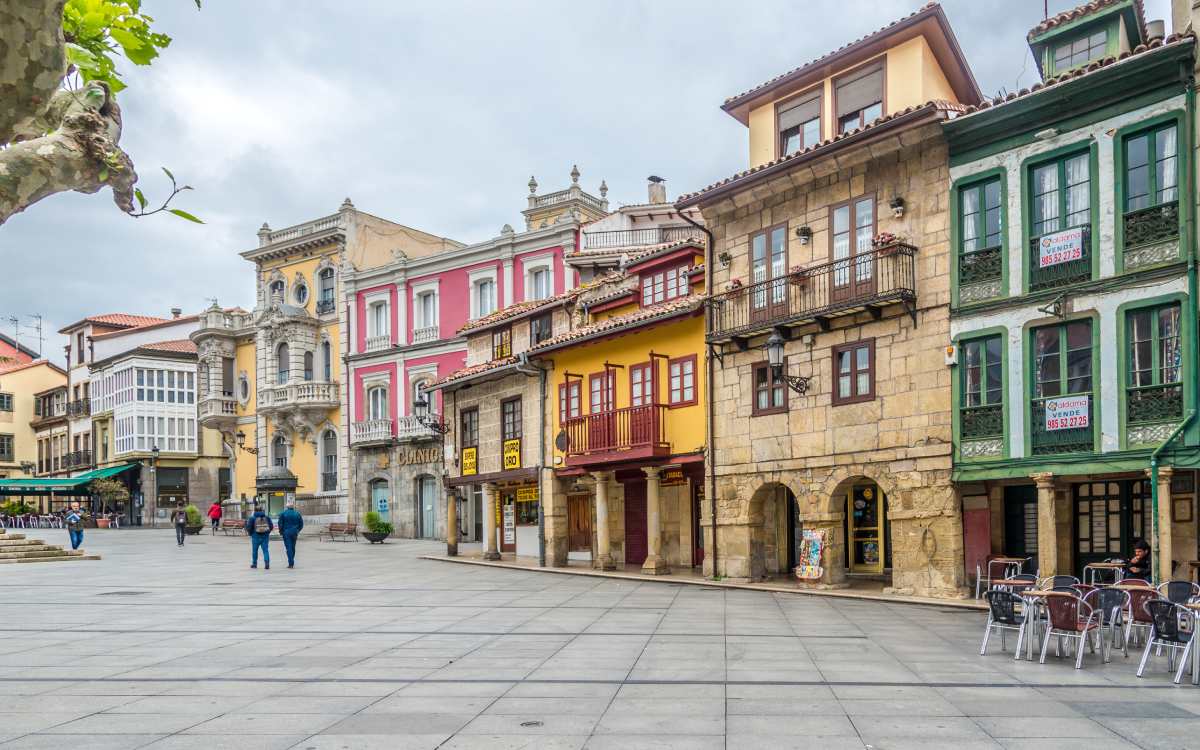
Old quarter of Avilés. | Shutterstock
What immediately catches the eye in Avilés is its striking old quarter, a picturesque scene from the Middle Ages. Its arcades supporting small homes, its winding streets and the splendid Plaza del Ayuntamiento make up the first impressions of this gorgeous town. Some of the recommended places to visit here are the Plaza del Mercado, the Ferrera Palace, and the churches of Vieja de Sabugo and San Nicolás de Bari.
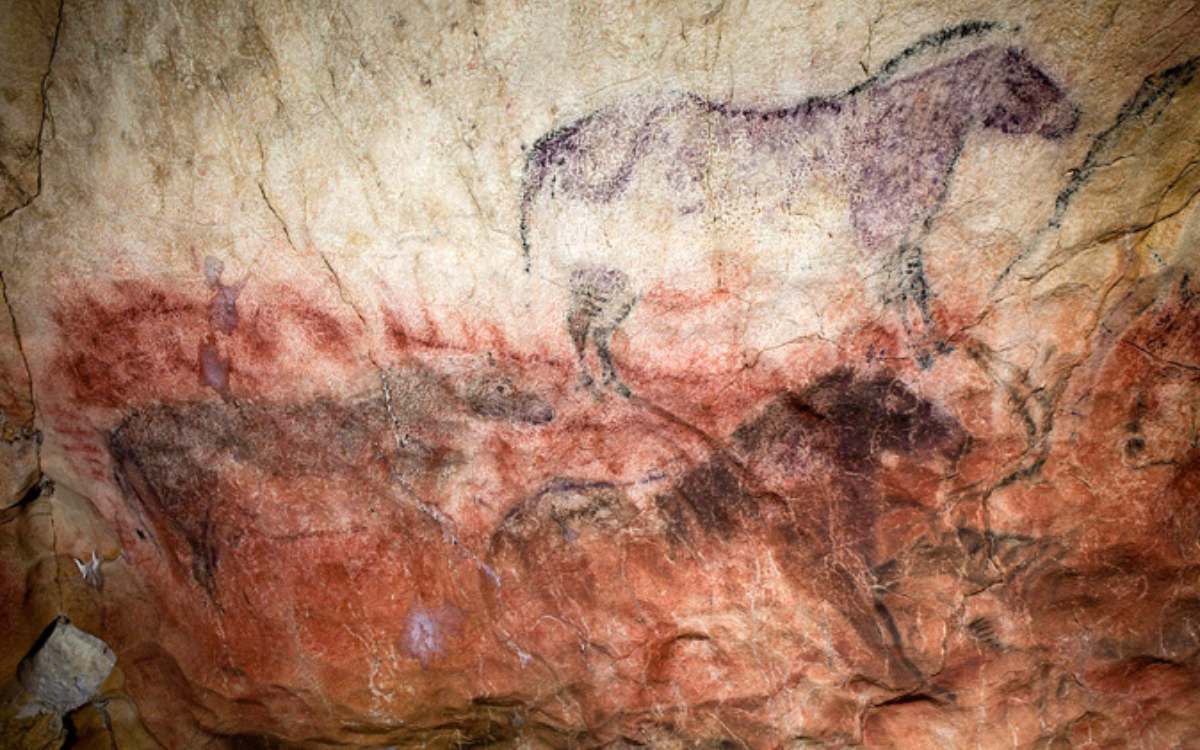
Tito Bustillo cave. | Turismo Asturias
One of the great historical wonders that is hidden in Asturias, the Tito
Bustillo cave is one of Europe’s most important cave art sites, exemplifying Palaeolithic art. Located quite close to the lovely village of Ribadesella, this impressive underground complex spans 700 metres and contains more than 100 Palaeolithic paintings dating between 22,000 and 10,000 BCE. A historical exhibition in which a profusion of horse and reindeer drawings may be observed.

El Buxu cave. | Turismo Asturias
Located very near the village of Cangas de Onís, El Buxu cave is another prehistoric display to be found in Asturias. Discovered in 1916, the most recent studies of El Buxu suggest that this site served as a settlement during the summer and autumn seasons. In the cave, numerous engravings and paintings in the form of birds, bears, horses, goats, and deer in addition to symbolic geometric figures can be found.
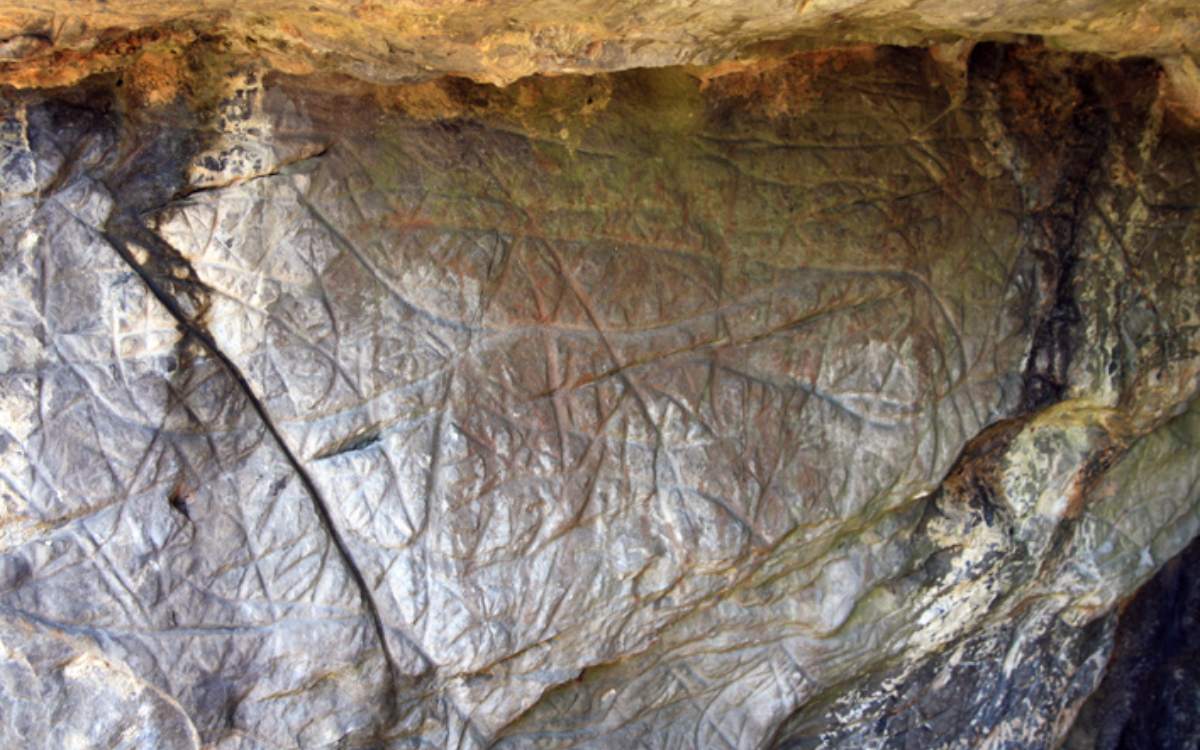
La Lluera cave. | Turismo Asturias
Another prehistoric, must-see site on any trip to Asturias is La Lluera cave, a few minutes journey from the village of Priorio. In its interior, one can behold paintings of such animals as horses, deer and bison. Owing to its location, it is thought that this cave may have served more as a sanctuary than a place of habitual residence.